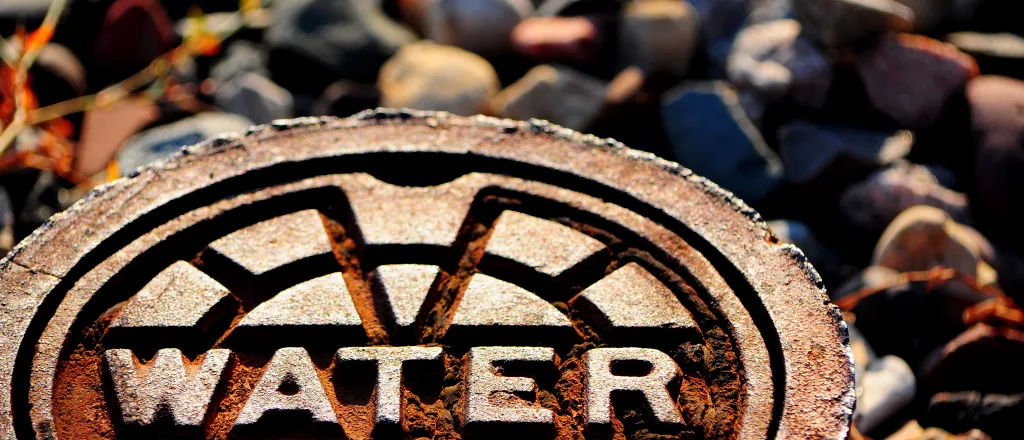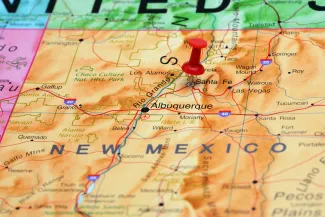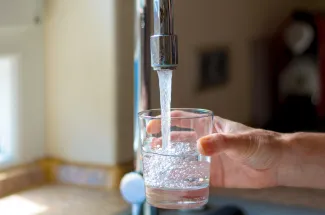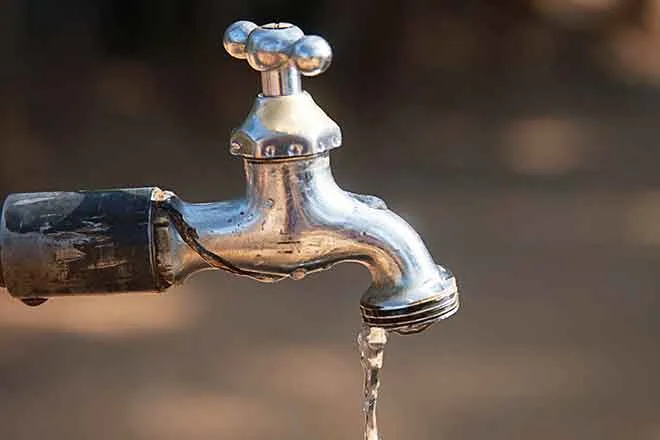
New Mexico officials tell lawmakers the state needs more money invested in water infrastructure
© artzenter - iStock-509493427
(Source New Mexico) The confluence of money and water appeared before a panel of New Mexico lawmakers who hold the purse strings of state government.
State officials said in order to strengthen the state’s water, lawmakers will need to invest more money in 2025.
But that applies not just to the basics, like requests to buy monitoring wells for a fuller picture of the hidden waters underground.

As promised, the governor is again seeking lawmakers’ approval to spend at least $500 million for the unprecedented project to act as a middleman in a new market for oil and gas wastewater, and the salty water from deep aquifers.
Rebecca Roose, the infrastructure advisor for the governor’s office, said a 2025 priority will be reintroducing a request in the upcoming session.
The promises of the project, called the Strategic Water Supply, range from ambitious to lofty.
Roose says the new endeavor will support New Mexico moving away from fossil fuels, make money for the state, develop clean energy jobs, and ease strain on freshwater sources.
“It’s critical that we figure out how to meet our economic development needs and advance our energy transition without further stressing our water resources,” Roose said.
Environmental and Indigenous groups have raised objections to the proposal, saying that it uses public money to offer the oil and gas industry a solution to a rising problem of wastewater disposal, and is putting too much emphasis on creating a market for the water, before ensuring it can be safely cleaned, extracted or transported.
Pei Xu, a researcher at New Mexico State University, does work for the public-private Produced Water Research Consortium, which is investigating how to use oil and gas wastewater – called produced water – off of the oilfields.
Xu told the lawmakers that the public has asked for more research in two areas: the movement of contaminants through soil and groundwater, and the human health and environmental risk factors.
“These are our priority research areas, we just do not have the money to do it, but with your help, I think we can continue to do work in these areas,” Xu told lawmakers.
Oil and gas money still flowing in
Presentations before the interim Legislative Finance Committee earlier in the day showed that oil and gas extraction generated more than $15.2 billion for the state, funding government from schools to state agencies.
Even as revenues have quadrupled in the last five years, experts say it’s vital to establish more independence from oil and gas, to protect against the financial shocks during boom-and-bust cycles.
But the consequences of New Mexico’s production are not just financial. Hotter and drier weather due to our fossil fuel use and production is straining the whole system.
New Mexico’s rivers and aquifers are experiencing both increased demand from people, crops and ecosystems that rely on them while shrinking supplies from human and climate changes.
Dearth of data for aquifers
There’s a lot about New Mexico’s aquifers that remain unknown, said Stacy Timmons, the associate director of hydrogeology at the New Mexico Bureau of Geology and Mineral Resources.
In order to characterize the major and minor aquifers of the state by 2037, the bureau would need $800,000 per year going forward, and an additional $1.25 million to hire personnel and buy software.
That would allow the state to drill 100 monitoring wells to better understand the shape, depth and amount of water underground – which is still unknown.
“$175 million is the concept that we have, it’s 12 years to get 100 wells and detailed information so we can more carefully plan and manage our groundwater resources,” Timmons said.
Timmons pointed out that the Bureau of Geology and Mineral Resources is the only agency dedicated to research, unlike the New Mexico Environment Department or the New Mexico Energy Minerals and Natural Resources Department, which is also required to regulate industries.
Focus for 2025: Strategic Water Supply
Much of the presentation focused on the Strategic Water Supply, a plan floated by Governor Michelle Lujan Grisham in the 2024 session, that failed after a bill substitution and a Hail Mary resurrection in the session’s last days.
Roose said the project would connect industry – like solar and wind manufacturing, for example – to sources of treated brackish and produced water.
The state would set aside the money and buy treated brackish or produced water from a water treatment company “once it meets certain water quality specifications” under a contract, she said.
There are currently no state treatment standards for either category of water.
Roose added that the state isn’t “getting in the business of buying or storing large volumes of water,” but acting as an intermediary.
She asked the rhetorical question of why the state would get itself involved.

© mheim3011 - iStock-544332118
“Simple reason for that is because then we as a state get to steer that newly available treated water resource to certain kinds of projects that are priorities for the state of New Mexico,” she said.
Senator Nancy Rodriguez (D-Santa Fe) asked Roose how much the program is expected to cost.
Roose said the state will ask lawmakers for two rounds of $250 million over two years. However, she said the cost estimates could change this summer, after the results of an economic analysis are published.
“As we get further in the interim session, it very likely could change because we will have even more robust data,” Roose said.
Lawmakers expressed a range of support.
Representative Susan Herrera (D-Embudo) said she supported more funding for aquifer data studies.
“We know we have some of the most beautiful, clean, deep aquifers in the state,” she said.
“But we really don’t know what’s happening with them, how fast they’re being depleted.”
Representative Nathan Small (D-Las Cruces) asked if the legislature should be more aggressive.
“Is it your sense that we should consider $1 billion plus, all the way up to $1.5 billion in a comprehensive potential water-focused investment as we look towards the next session?” he asked.
Roose replied that those numbers were within the ballpark.
“That really means more investments than the legislature and the state has made in recent years,” she said.
Senator Pat Woods (R-Clovis) asked if the state government has already put forward the process for regulations around the Strategic Water Supply.
Roose said the state government was still in the rule-making process, which will continue through August.
Currently the rule would not allow for discharges outside of oilfields, but she said it would create a pathway for uses of produced water that would “complement the Strategic water supply.”
“It sounds like we need to put some more money towards water, so to speak,” Woods concluded.
Source New Mexico is part of States Newsroom, a nonprofit news network supported by grants and a coalition of donors as a 501c(3) public charity. Source New Mexico maintains editorial independence. Contact Editor Shaun Griswold for questions: info@sourcenm.com. Follow Source New Mexico on Facebook and X.














